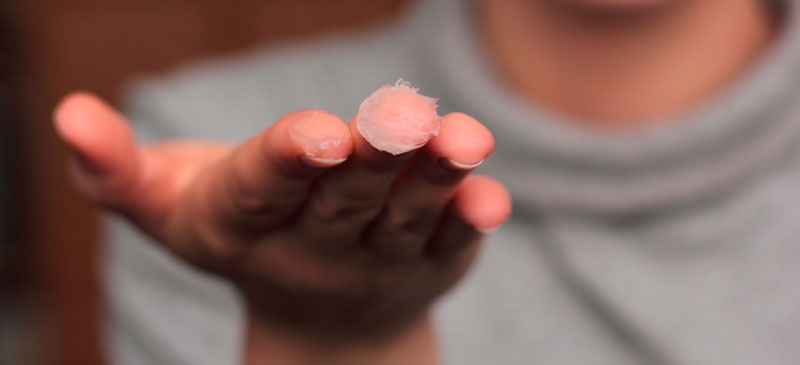This Dr. Axe content is medically reviewed or fact checked to ensure factually accurate information.
With strict editorial sourcing guidelines, we only link to academic research institutions, reputable media sites and, when research is available, medically peer-reviewed studies. Note that the numbers in parentheses (1, 2, etc.) are clickable links to these studies.
The information in our articles is NOT intended to replace a one-on-one relationship with a qualified health care professional and is not intended as medical advice.
This article is based on scientific evidence, written by experts and fact checked by our trained editorial staff. Note that the numbers in parentheses (1, 2, etc.) are clickable links to medically peer-reviewed studies.
Our team includes licensed nutritionists and dietitians, certified health education specialists, as well as certified strength and conditioning specialists, personal trainers and corrective exercise specialists. Our team aims to be not only thorough with its research, but also objective and unbiased.
The information in our articles is NOT intended to replace a one-on-one relationship with a qualified health care professional and is not intended as medical advice.
What Is Slugging? Does This Skin Care Routine Benefit Skin?
July 25, 2022

Do you use natural skin care products and other ingredients — such as serums, exfoliants and oils – but still feel like your skin is relatively dry, dull and/or uneven in texture? Then you might benefit from a skin care trick nicknamed “slugging,” which involves layering thick ointment over thinner ingredients to help “seal” them in.
Does slugging actually work? While there’s been limited studies focused specifically on slugging skin care routines, evidence does exist to suggest that it can have benefits.
The types of ingredients used for slugging — including petroleum jelly (aka Vaseline) — are known to be great defenders against dryness — plus they help other skin care products be absorbed better.
What Is Slugging?
Slugging is a skin care practice in which you apply occlusive products to your face over other beneficial ingredients, such as serums and moisturizer. This helps create a protective surface on your skin and can contribute to an overall healthier skin barrier.
To understand how slugging works, it first helps to get clear on what occlusives are.
Occlusives, such as petroleum jelly, are a group of skin care products that create a layer on the surface of your skin that keeps water and skin’s natural oils (aka sebum) sealed in. In other words, they prevent water and oil evaporation from the skin, which is also called transepidermal water loss.
Why is it called “slugging”? As you may have guessed, it earned this name because of how thick occlusive ointments can make your face look and feel.
When you apply Vaseline or similar products to your skin, they tend to make you slick and shiny, much like a slug. Don’t worry, though, slugging doesn’t actually require you to apply any slug-derived ingredients to your face.
Benefits
Why is slugging good for your skin? Here are the main benefits attributed to slugging and why it’s now recommended by more and more dermatologists:
1. Can Help Heal Dry Skin
Slugging can help your skin feel and appear smoother, softer and more even. Occlusives, such as Vaseline, aid in skin moisture by preventing oils and water from leaving the skin, which is the main cause of dryness.
For the most hydrating effects, it’s important to slug with both an occlusive and moisturizer.
Occlusives themselves do not hydrate the skin. Instead, they help moisturizers to do their job more easily — plus they have the benefit of helping repair skin’s barrier.
To slug properly, you first want to apply a moisturizer to clean skin and then layer an occlusive on top in order to achieve dewey skin.
2. Helps Lock in Other Skin Care Products
Slugging is a great way to get the most benefits possible from your skin care routine, especially if you’re spending money on quality serums, toners, etc.
Occlusives allow skin care ingredients — such as vitamin C serum, antioxidants, peptides, niacinamide and others — to work more effectively, which can leave you with brighter and more youthful-looking skin.
If you’re working on preventing signs of aging, such as fine lines and wrinkles, or overcoming hyperpigmentation, slugging can help with this too. Just be sure to combine an occlusive (such as Vaseline) with quality products that are aimed at your skin type and goals.
(You may consider first exfoliating the skin to help get rid of toxins and impurities. Two natural exfoliators include the pumice stone and dry brushing.)
3. May Lower Redness or Irritation Among Those With Sensitive Skin
If you’re prone to red, flaky or irritated skin — including if you have eczema or dermatitis — slugging is a good fit for your skin type since it can help heal a compromised skin barrier.
For those with sensitive skin, slugging is a smart way to keep bacteria and other irritants from reaching and damaging the skin, while also boosting how well calming skin care ingredients (such as humectants and emollients) can work.
Slugging is not exclusive to your face either. You can do it on different body parts that may be irritated, chafed, dry, etc.
Try slugging after showering and shaving (you always want to clean the area well first) or before swimming in a chlorinated pool in order to prevent chlorine rashes.
How to Do It
When should you slug?
Most often, slugging is done at night as the last step of your skin care routine.
The main reason to slug before bed is because of how slugging makes your skin look. Occlusives are thick and leave your skin shiny and ”gooey;” therefore most people prefer to avoid slugging during the daytime.
Which products should you apply to your skin first before slugging?
A popular way to go about slugging is to first wash your face (or shower) and then apply serums or thinner lotions.
The best slugging products are those that contain hydrating and soothing ingredients, such as hyaluronic acid, glycerin and niacinamide (vitamin B5).
What’s the correct way to slug?
After you clean, tone and moisturize your skin, you finish with a thicker occlusive to lock everything in. To get the most benefits from different moisturizers, try applying humectants and emollients under occlusives.
Humectants and emollients boost moisture by pulling water into the skin. These include products such as:
- lipids
- silicones
- oatmeal
- shea butter
- glycerin
- hyaluronic acid
- sorbitol
- urea
- aloe vera
Here’s an example of a slugging routine:
- Wash your skin. and possibly also exfoliate. (This should be done one to three times per week, on average.) It’s important to slug over clean skin to prevent pores from clogging.
- Apply serums.
- Apply other moisturizers.
- Layer on a thin coat of whichever occlusive you choose to use, such as petroleum jelly or mineral oil. You don’t need a super thick amount, just enough to lightly cover your face/the area of your skin you’re targeting.
Does slugging with Vaseline work best? Is another product superior?
Occlusives include products such as:
- Petroleum jelly (Vaseline)
- Lanolin
- Beeswax
- Olive oil
- Avocado oil
Petroleum jelly (Vaseline) is one of the most loved ingredients, especially because it’s widely available and inexpensive. Vaseline is great at preventing water loss, as it’s been shown to reduce transepidermal water loss by up to 98%.
How often should slugging be done?
This depends on your skin type, plus possibly the time of year or climate in which you live.
Slugging is especially helpful for the dry, cold, winter months when skin dryness seems to peak. If it’s humid outside and you’re oilier than usual, you can slug less frequently, such as two to three times per week.
If you have dry skin, slugging nightly can really help boost skin’s tone and texture. Ultimately, pay attention to how you respond, and adjust accordingly.
What Not to Do
You want to avoid slugging over uncleaned skin, which can lead to oiliness and breakouts, since this traps dirt and bacteria in your pores. Always wash your skin well first!
Which products should you NOT USE when slugging?
While it depends on your skin type, dermatologists recommend that you don’t slug with comedogenic products, such as coconut oil, which may contribute to acne breakouts.
Retinoids and facial acids — such as AHAs and BHAs, including glycolic acid — may also cause irritation if you apply them before slugging. Some people can get away with slugging over these ingredients, but for those with sensitivities, this may be too much for skin to handle.
Who Shouldn’t Try Slugging?
If you have acne-prone skin, slugging might worsen breakouts. You can still try it one to two times per week if you have combination skin, but be sure to clean and exfoliate skin first.
Slugging itself is not considered acne-causing (it’s non-comedogenic), yet some people claim it can trigger zits.
Keep in mind, if you have combination skin, you can try slugging on areas that are dry.
It can take some trial and error to figure out what works best for you. Exfoliating, using facial acids (such as salicylic acid) and then applying a lightweight moisturizer might be all you need to take care of your skin if you’re oily or acne-prone.
Conclusion
- What is slugging, and how do you do it? It’s a skin care practice that involves applying an occlusive product, such as Vaseline/petroleum jelly, over other beneficial ingredients.
- It can help boost hydration, contribute to a glow and dewy skin, and help heal skin’s barrier.
- Depending on your skin type, try doing it two to seven times per week. Oilier types should limit slugging, while dry types can benefit from doing it almost daily.
- For the best results, first apply ingredients that are targeted toward your goals, such as anti-aging, brightness, reducing hyperpigmentation, etc. Be careful about combining slugging with retinols and facial acids.
Comments
Please keep comments under 200 characters.






Thanks for mentioning he application of humectants like hyaluronic acid prior to slugging!
I was taught that petroleum and Vaseline were not good for your skin